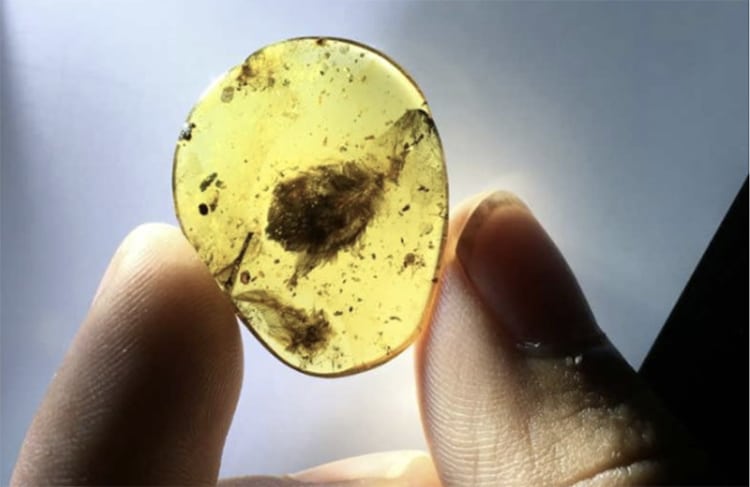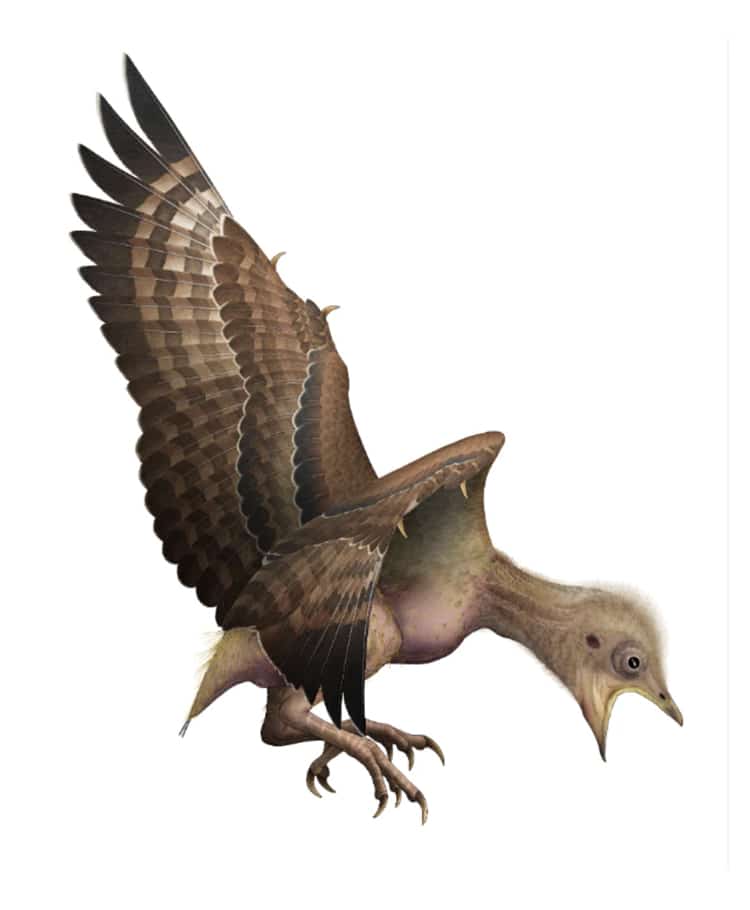
These tiny baby bird feathers preserved in amber since the Cretaceous period have enabled scientists to understand the effects of such feather features on survival for certain species. (Photo: Shundong Bi)
Birds may not seem like fascinating windows into the past, but for paleontologists our feathery friends are living relics. Birds have a direct line of continuity back to the age of the dinosaurs. Many varieties survived while the likes of the T-Rex went extinct through catastrophic events. But why the birds were able to survive is still a question for study. New papers suggest that the molting patterns of certain prehistoric species may have engineered their survival and shaped the biology of modern birds.
Birds molt their feathers in a process which replaces these valuable appendages made of keratin (what composes our fingernails). Like human children loosing baby teeth, this is the process by which baby birds get adult feathers. There are two types of bird molting patterns to consider. Altricial birds are born naked and kept warm by their parents’ body heat. Precocial birds are born with their own baby feathers. They all molt periodically, even in adulthood, a process which is very energy-draining. It can also make a bird vulnerable to temperature changes if (like altricial chicks) the bird simultaneous molts all its feathers. This is less protective than species who lose and replace feathers progressively over a molting period.
A recent study by Shundong Bi and Jingmai O’Connor examines baby bird feathers preserved in amber. An incredibly rare find, Chicago’s Field Museum called them “the first definitive fossil evidence of juvenile molting.” The bird was likely an Enantiornithines type of bird, which was precocial. Yet, interestingly, the feathers present a slightly different story. “This specimen shows a totally bizarre combination of precocial and altricial characteristics,” says O’Connor. “All the body feathers are basically at the exact same stage in development, so this means that all the feathers started growing simultaneously, or near simultaneously.”
Elaborating further, O’Connor says, “Enantiornithines were the most diverse group of birds in the Cretaceous, but they went extinct along with all the other non-avian dinosaurs. When the asteroid hit, global temperatures would have plummeted and resources would have become scarce, so not only would these birds have even higher energy demands to stay warm, but they didn’t have the resources to meet them.”
O’Connor’s work with Yosef Kiat on another paper suggests the relationship to modern birds. The pair tested over 600 modern bird skins from the Field Museum for active molting. “Among the sequentially molting birds,” Kiat explains, “we found dozens of specimens in an active molt, but among the simultaneous molters, we found hardly any.” This suggests that ancient birds may not have molted as often as their modern descendants. This difference in molting could suggest why some birds, more prepared to molt like modern creatures, may have survived the crises which ended the dinosaur.
“I don’t think there’s any one particular reason why the crown birds, the group that includes modern birds, survived,” O’Connor concludes. “I think it’s a combination of characteristics. But I think it’s becoming clear that molt may have been a significant factor in which dinosaurs were able to survive.”
Modern birds, the descendants of dinosaur species who survived the catastrophic extinction events, may have survived based on the style of molting of a given species.

Artist’s rendition of a baby Enantiornithine bird. (Photo: Field Museum)
h/t: [Discover]
Related Articles:
Dinosaur Fossil of a Titanosaur Discovered in Argentina May Belong to the Largest Land Animal Ever
Man Finds 82-Foot-Long Dinosaur Fossil in His Backyard
110-Million-Year-Old Dinosaur Tracks in Texas Riverbed Emerge as Waters Recede
220-Million-Year-Old Dinosaur Footprint Is Discovered by a 4-Year-Old
